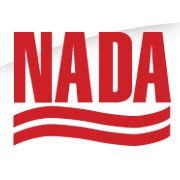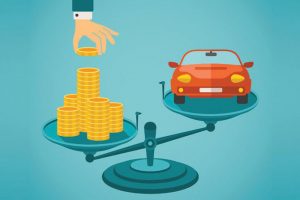Dealerships take care of their customers for the entire lifetime of the automobile across the entire automotive ecosystem, not just the point of sale.
Many first-year MBA students learn a marketing concept called the “Iron Law of Distribution.” The idea is that when you bring a product to market, you can change who owns the distribution channel for that product — but changing who distributes the product doesn’t change the cost structure associated with distributing the product.
That is, you can change whether a factory or an independent company owns the retail outlet — but that by itself doesn’t change or make retailing costs disappear.
This is a stumbling block for lots of factories that are looking for ways to reinvent themselves. It’s also a huge source of misunderstanding for business reporters who cover companies seeking to “sell direct.” If factories own their own stores, the narrative goes, then there will be no “middleman,” their costs and profits will go away, and the savings will get passed along to customers.
Except for the Iron Law. Changing retail ownership doesn’t create any savings in and of itself because the factory store becomes the new “middleman.” The factory will need to make its own profits retailing. And worst of all, customers are usually hurt when factories vertically integrate sales with manufacturing because it raises prices by reducing retail price competition.
The Myth of the Middleman
The fact is that when a factory decides to sell its products directly to customers, they incur costs of selling those products to customers — in the exact same way that an independent distributor would incur costs.
In the automobile business, that means factories “selling direct” would incur the costs of running a dealership. They would incur the costs of buildings, land, equipment, inventory, insurance policies, utility bills, and all the human capital needed to run the operation.
And the auto dealership business is complex. Longtime auto industry analyst Glenn Mercer calls the dealership business “the most complex retail business in America today.”
That’s because local dealerships don’t just sell new cars. They service them. They arrange financing for them. They handle registrations and titles. They take trade-ins. They advertise and collect sales data and customer lists. They often also sell used cars. This is another reality that gets completely lost in the “direct sales” debate: Dealerships take care of their customers for the entire lifetime of the automobile across the entire automotive ecosystem, not just the point of sale.
Manufacturers that experiment with selling directly always eventually run into that reality. They always find that auto retail is complex, that factories are not all that good at retailing, that having local dealers buy those cars off the factory line, and selling and servicing them in their local communities makes a lot more sense business model.
“But what about the profits?” one might ask. “Can’t selling direct eliminate dealership profits?”
Not really. The fact is that dealerships make very little money selling new cars. Local dealerships are only profitable when they consider the entire ecosystem of the vehicle — sales, service, financing, used vehicle sales, reconditioning contracts, fleet maintenance, and on and on and on.
Local dealerships are capital-intensive businesses — meaning it costs a lot in land, buildings and equipment to run them. American dealerships have invested more than $200 billion in land and buildings alone. Any factory wishing to sell directly would incur those same costs of capital — and its shareholders would certainly expect to get a return on those expenditures. Why sink money into a retailing operation when there’s no return on it?
For consumers, it’s even worse. When factories own retail outlets, there is no competition to keep prices down. Factories set prices and hold excess profits for themselves. When independent retailers compete, that always creates price pressure. That’s why no supermarket can sell Campbells Soup for 10% or 20% more than another supermarket — they’ll eventually go out of business. Same thing with car dealerships. When car dealers compete, prices go down. One peer-reviewed academic study has shown that when dealerships compete in proximity to each other, the average price of a vehicle goes down by about $500.
And price competition impacts not only sales but service and repairs as well. Customers at one factory-owned dealership chain have had to wait three weeks or longer for a service appointment. Can you imagine waiting three weeks to pay to get your vehicle fixed? Nowhere in America today would a customer have to wait that long to get service on a Chevrolet, Toyota or Jeep. If one local dealership can’t get you in for a service appointment this afternoon, the one down the street most certainly can. Consumers win when dealerships compete.
In the end, the “middleman” myth is a really lazy and simplistic way of thinking about business. If local dealerships are middlemen, then Walmart is a middleman. So is Amazon. And Walmart and Amazon aren’t expected to service or repair the products they sell as dealerships do.
Local dealerships do more than sell cars. They help their customers over the car’s lifecycle — from sales to financing, registration, service, and trade-ins. They compete for customers at every stage of the ownership cycle, providing choices and competitive pricing.
That’s why locally-owned dealerships are good for consumers and the communities where they operate. It’s been that way for a hundred years — and the iron law of distribution explains perfectly why it’ll be good for customers for the next hundred years.









